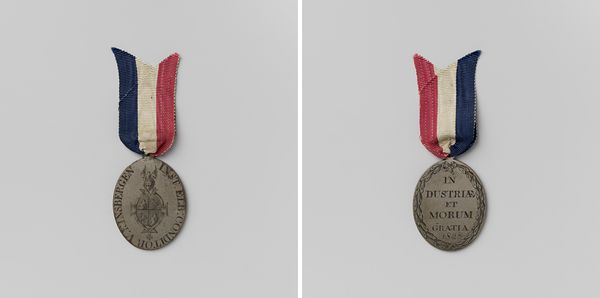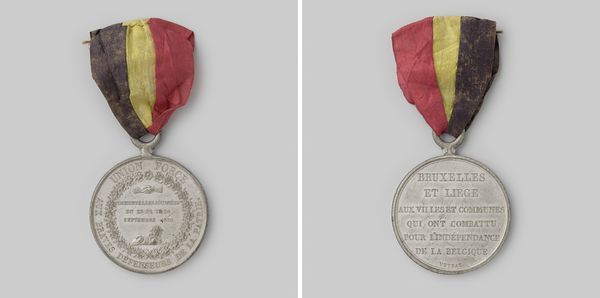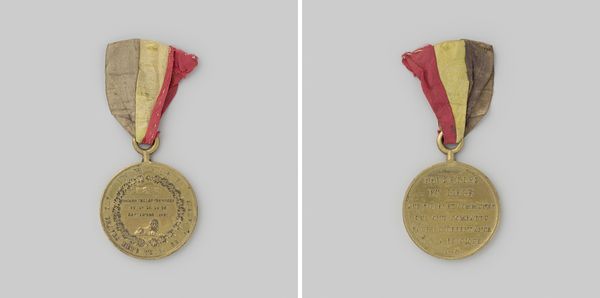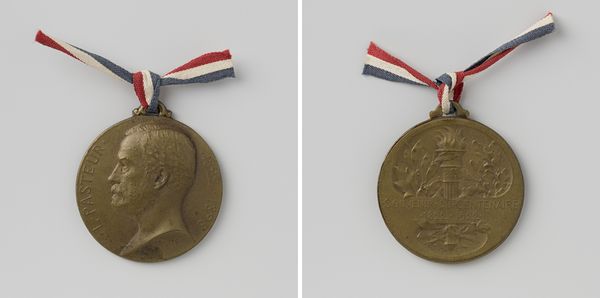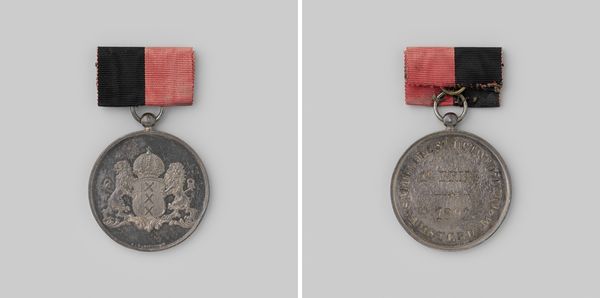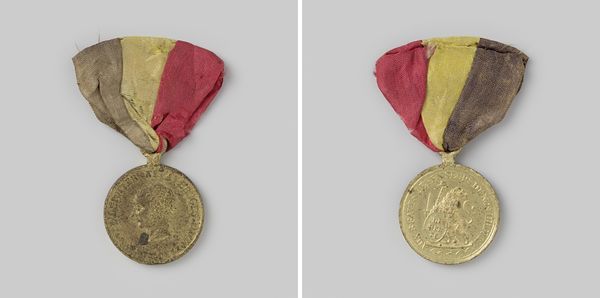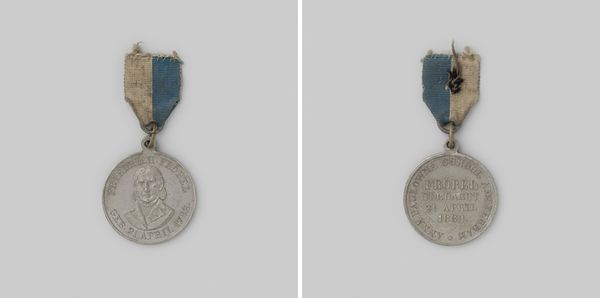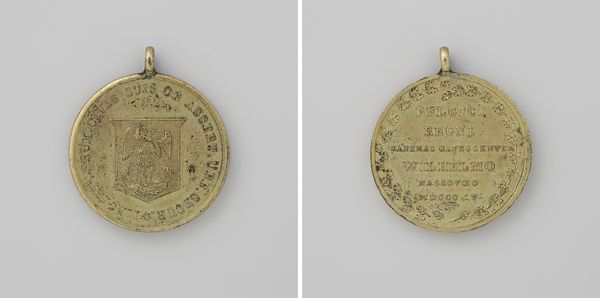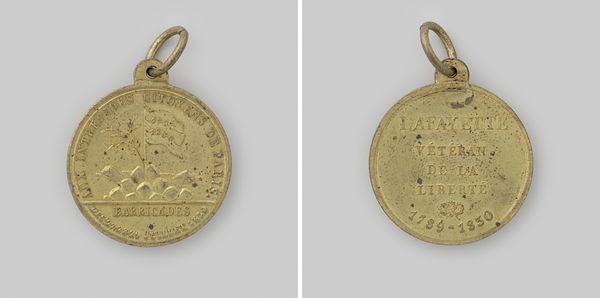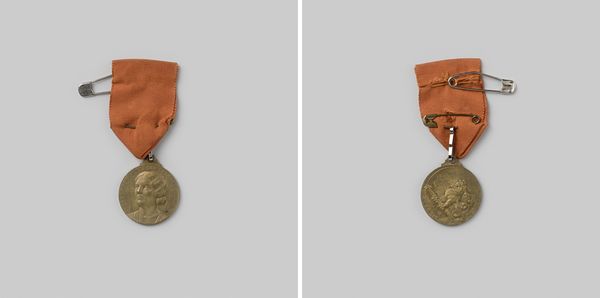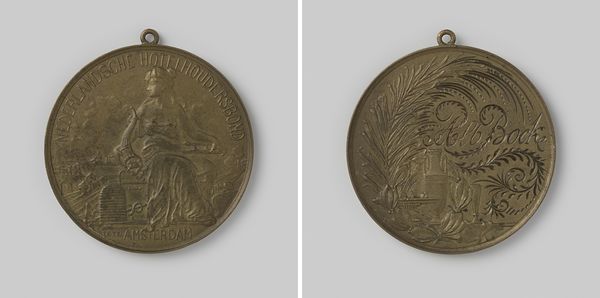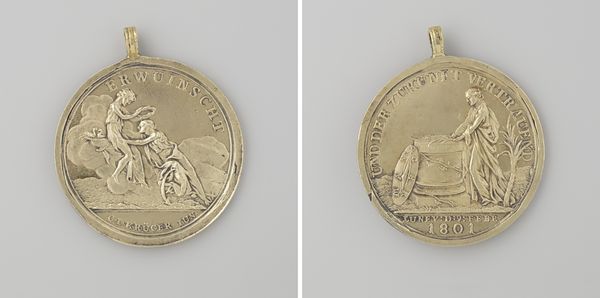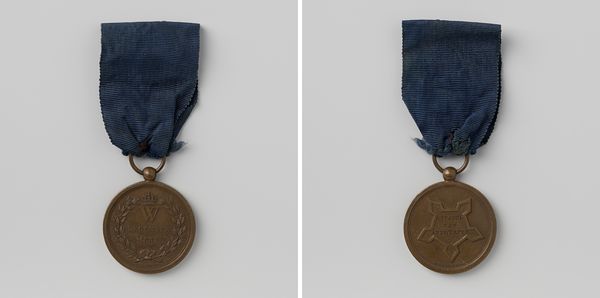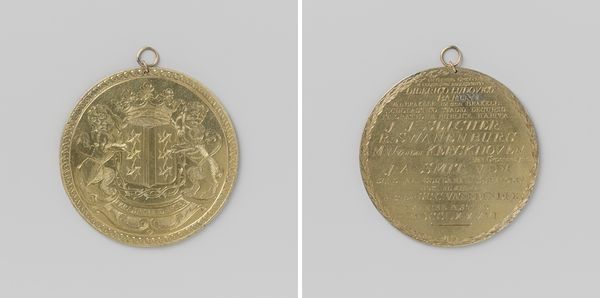
print, metal, relief
#
portrait
# print
#
metal
#
relief
#
history-painting
Dimensions: diameter 3.7 cm, weight 26.97 gr
Copyright: Rijks Museum: Open Domain
Curator: This is a metal relief print created by M. Borrel, entitled "Ter ere van de gesneuvelden in september te Parijs"— "In Honor of those who fell in September in Paris." The piece likely dates from the 1830s, recalling a specific historical moment. Editor: The work makes me think about public remembrance and collective mourning. It's so small, so intimate, yet it speaks to such grand themes. The ribbon, the muted tones of the metal – there's a somber, elegiac quality. Curator: These commemorative medals served a crucial function in the 19th century. They were instruments of public memory. In post-revolutionary France, marking important battles and the sacrifices of ordinary citizens became vital for solidifying national identity. Who was remembered and how were they remembered served clear ideological functions. Editor: Absolutely. And this medal, with its inscription and weeping willows around what seems to be a cenotaph, presents a very particular narrative. The fallen are cast as heroes, but whose version of heroism are we seeing here? Curator: We must consider the political context. The medal memorializes those who died in Paris in September of some year – given the date range, probably during the July Revolution of 1830. It's essential to understand how this particular moment in history, a time of upheaval and transition, shaped the iconography and purpose of this medal. The new regime used pieces such as these to generate visibility for their own causes, creating narratives in order to legitimise themselves in the process. Editor: This makes me reflect on what memorials look like today. Who gets a statue, and why? Whose stories get told? It’s easy to imagine this medal tucked away somewhere in a drawer now, all that revolutionary fervour faded. But holding it, studying it like we are today, forces us to reckon with the messy, ongoing politics of how we memorialize the past. It calls to question who benefits from this memorial, too, and whether a narrative about a so called heroic battle distracts from who lost the battle. Curator: Examining the context allows us to appreciate this metal relief as more than just a pretty object; it’s a miniature piece of political theater, a calculated exercise in nation-building. Editor: Right. I started seeing it as a small, melancholic object. I now realise it holds the weight of big historical events and difficult, but necessary conversations.
Comments
No comments
Be the first to comment and join the conversation on the ultimate creative platform.
